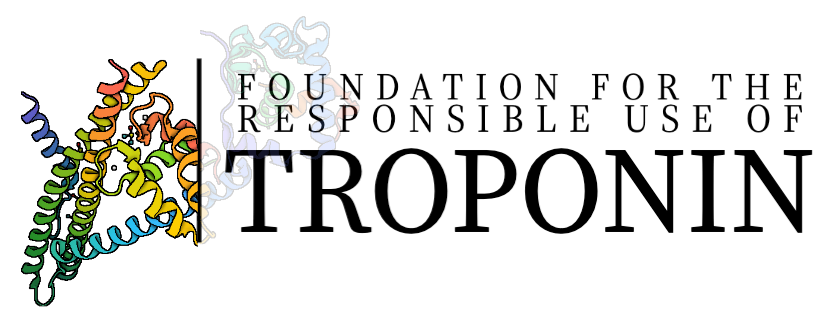- Clinicians should avoid reflexively equating elevated troponin levels with myocardial infarction solely on the basis of an elevated high-sensitivity troponin.
- Myocardial injury is defined by an elevated cardiac troponin value and independent of the etiology it is associated with a poor prognosis. However, it is crucial for clinicians to differentiate between nonischemic myocardial injury, which may be associated with conditions such as renal failure or sepsis, and compare to myocardial injury in the setting of acute myocardial ischemia with or without atherosclerotic plaque disruption. If ischemic ECG changes and/or symptoms are lacking, a diagnosis of “non-MI troponin elevation due to (an underlying cause)” would be more accurate.
- Detection of an elevated cTn value above the 99th percentile upper reference limit (URL) is defined as myocardial injury. The injury is considered acute if there is a rise and/or fall of cTn values.
- The criteria for type 1 myocardial infarction (MI) includes detection of a rise and/or fall of cTn with at least one value above the 99th percentile and with at least one of the following:
- Symptoms of acute myocardial ischemia;
- New ischemic electrocardiographic (ECG) changes;
- Development of pathological Q waves;
- Imaging evidence of new loss of viable myocardium or new regional wall motion abnormality in a pattern consistent with an ischemic etiology (ie coronary artery distribution);
- Identification of a coronary thrombus by angiography including intracoronary imaging or by autopsy.
- The criteria for type 2 MI includes detection of a rise and/or fall of cTn with at least one value above the 99th percentile and evidence of an imbalance between myocardial oxygen supply and demand. Atherosclerotic plaque disruption is not a feature of type 2 MI.
- The terms “STEMI” and “NSTEMI” should only be used when referring to a type 1 MI and should be differentiated from type 2 MI and non-MI troponin elevation due to a noncardiac cause.
- A number of systemic conditions can cause non-MI troponin elevation and include, but are not limited to:
- Sepsis or other infection
- Chronic Kidney disease
- Stroke, subarachnoid hemorrhage, neurologic disease
- Critical illness
- Pulmonary embolism, pulmonary hypertension
- Infiltrative diseases, ie, amyloidosis, sarcoidosis
- Chemotherapeutic agents
- Strenuous exercise
- Cardiac contusions
- Tachyarrhythmias (ie, atrial fibrillation, atrial flutter)
- At times, there may be an overlap between myocardial ischemic and nonischemic conditions associated with increased troponin values. In these situations it may be difficult to discriminate between mechanisms of myocardial injury. It is important to document all possible contributors and their relative contribution.
- Patients may have elevated cTn values and marked decreases in ejection fraction due to sepsis caused by endotoxin, with myocardial function recovering completely with normal ejection fraction once the sepsis is treated. Similarly, elevated cTn values can be seen in other disease states with an associated reduction in ejection fraction that recovers once the underlying disease has been treated.
- Arriving at a diagnosis of MI and MI type requires integration of clinical findings, clinical history, patterns on the ECG, laboratory data, observations from imaging procedures, and on occasion pathological findings, all viewed in the context of the time horizon over which the suspected event unfolds.
To cite the information above:
Please either reference www.troponin.org or the following paper:
Maayah M, Grubman S, Allen S, Ye Z, Park DY, Vemmou E, Gokhan I, Sun WW, Possick S, Kwan JM, et al. Clinical Interpretation of Serum Troponin in the Era of High-Sensitivity Testing. Diagnostics. 2024; 14(5):503. https://doi.org/10.3390/diagnostics14050503
Maayah M, Grubman S, Allen S, Ye Z, Park DY, Vemmou E, Gokhan I, Sun WW, Possick S, Kwan JM, et al. Clinical Interpretation of Serum Troponin in the Era of High-Sensitivity Testing. Diagnostics. 2024; 14(5):503. https://doi.org/10.3390/diagnostics14050503
